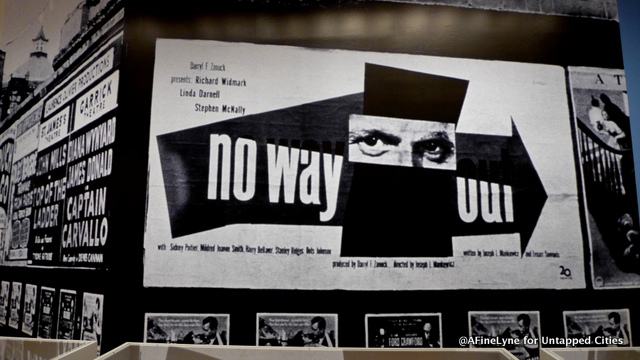
In our ever changing society, it’s hard to believe that one man could remain so influential and relevant over a period of nearly six decades. Everything is Design: The Work of Paul Rand opened at The Museum of the City of New York this week, covering an impressive career of one of this country’s foremost graphic designers.

Born Peretz Rosenbaum in Brooklyn in 1914, Paul Rand embraced art at a very early age. Thinking that shortening his name would open more doors, he changed his name to Paul Rand, taking the last name from his uncle. His career began in the 1930s designing magazine covers, and by the 1940s, Rand was Chief Art Director at the William H. Weintraub Advertising Agency on Madison Avenue.
As you make your way through the exhibit, you can’t help but recognize posters of some of our favorite ads over the decades. Posters of his clients, that are too many to list and just as diverse, include the likes of Esquire Magazine c.1938, Smith, Kline and French Laboratories c.1945, Dunhill Clothiers c.1947, Hartcourt Brace and Company c.1957, Colorforms c.1959, UPS c.1961, American Broadcasting Corporation c.1962, IBM c.1967 and even the short-lived NeXT Computers c.1986, with Steve Jobs labeling Rand “the greatest living graphic designer.”

The exhibit is organized into five sections beginning with his Early Life and Career, moving on to Madison Avenue and Books and Publications. Much emphasis is given to the section on Creating Corporate America and ends with his Writing and Teaching. His career can actually be divided into three periods beginning with his design career which began in 1937, when he worked in book design and media promotion. From 1941 to 1954, he concentrated his efforts in advertising design, and from 1954 on, he worked largely on creating corporate identity programs, which involved educating businesses about the value of branding and logo recognition–visually conveying their message.

His objective was to take the ordinary and make it noteworthy and memorable. He is credited with empowering art directors with what was historically the purview of the copywriter. He merged text with images, photographs and line-drawings, collages and artwork. Even his own handwriting for the look and feel of what he called “Friendliness.” This style was uniquely his.

Initially his father was unconvinced that he could make a living with his art and required Paul to attend night school classes at the Pratt Institute, where he studied from 1929 to 1932, then on to Parsons School of Design from 1932 to 1933, and finally the Art Students League from 1933 to 1934. But he always felt himself to be self-taught and looked to the work of The Bauhaus for inspiration.

He is an author of many books starting with This is the Stafford Stallion in 1944 and ending with From Lascaus to Brooklyn in 1996. Three of these books are memoirs. In addition, Rand and his wife co-authored three illustrated children’s books which are in this exhibit. His teaching experience has extended from Cooper Union in 1942 and Pratt Institute in 1946 to a long teaching relationship with Yale University where he started as a professor of graphic arts at their School of Art in 1956 until his retirement in 1985, hammering home the concept “Don’t try to be original. Just try to be good.” A formidable design writer said of him, “he is an enemy of mediocrity.”

Rand continued on after retirement with the Yale University summer program in Brissago, Switzerland from 1977 to 1996 and as a Yale faculty member and emeritus professor. During the 1990s he continued working from his studio in Weston, Connecticut both in design and writing.



Paul Rand has received extensive awards and acknowledgements, including being inducted into the New York Art Directors Club Hall of Fame in 1972, and received medals from the American Institute of Graphic Arts and The Type Directors Club. His work has been exhibited at the National Museum in Stockholm, the Museumm of Modert Art here in New York and the Alliance Graphique Internationale in Paris, London and Lausanne. He passed away in 1996 at the age of 82.

Everything is Design: The Work of Paul Rand is up at the Museum of City of New York through July 19th.
You can contact the author at AFineLyne






